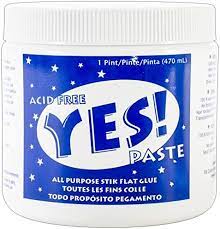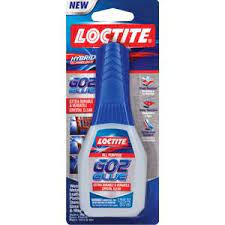How do you make your packaging?
The truth is... I am always changing my formula and switching things up.
Packaging is an integral part of making a toy and I would go so far as to say the packaging is more important than the toy.
A clever package can be sold without anything in the blister.

"Deadbeat Dad" By Death By Toys
I will start with blisters because that is easy. Buy your blisters from Dov at DKE.
He has a blister for just about anything, including a giant sized one for 5.5" figures (The #9)
Dov just got in the long awaited resealable blister.
its the perfect packaging for everyone. Collectors who want to display the toy or for those who prefer to display it in the package.
Get all of Dov's blisters and packaging materials (Including acid free backer boards).
Go here: dketoys.com/blisters
Tell him Scott sent you.
Design Your Cardback
There are no limits to how you design a cardback. I have sculpted and cast a 3D cardback. I have seen them in wood, acrylic, metal, ETC.
But a standard Star Wars card is 6x9".
If you follow this template it will fit inside the resealable blister.
(Note: This template uses a Standard 3.75" #2 Blister)
Front Template
Back Template
What Not To Do!
When I first started I used diluted Tacky Glue to adhere a printout to a comic book backer card. Then trim it with an Exacto Blade. Then I clipped the corners with a craft store corner rounder.
Everything done here is wrong. Don’t use Tacky glue for your cardbacks. Tacky glue is not acid free (although they do make it, but the regular version is not acid free).
Tacky Glue is not archival. Diluting it also makes the card buckle and curl.
I wouldn’t use comic book backs either. They come in weird sizes. I’ve always had a hard time getting them to work.
Trimming your cardbacks with an Exacto Blade is difficult. Sometimes it’s uneven. Sometimes you don’t cut all the way through. Sometimes it’s crooked and it’s a hell of a lot of work if you are doing 20 plus cardbacks.
Craft store corner rounders will break after about 30 uses. They are garbage. Don’t even think about it.

So, how do I make a good Cardback?
Here is a video I made making a cardback in real time.
Here is the "Barbarian Rage" method.
I start with a good 30pt (0.030) chipboard. I’ve done lots of experiments with this. Anything thinner that 30pt is too flimsy and anything thicker than 30pt is too thick to cut well.
Now what I do is take your card design and print them out. I use the local Fedex Kinkos. I center the design on a standard 8.5x11 sheet of paper. (See Attached template)
Then use an acid free adhesive. I know a lot of people use a spray adhesive. It’s tempting because it’s easy. But the sheet ALWAYS lifts off the board. Sooner or later it will buckle and release from the chipboard. Don’t use spray adhesive. It stinks.
You can use Elmer’s Glue sticks. They are acid free and archival. The problem with that is you have to really jam it in. There are some spots that you have to really go over and apply lots of pressure. And while I’ve never had a problem with it, I’ve heard that the print will lift off the card after a few years. And you will go through A LOT of little tubes of glue sticks.
Here is the best way that I have found to make a cardback, step by step.
Make 2 prints. One for the front and one for the back (don’t skimp on the back of the Cardback!).
Give the back print a 1/4 inch bleed on each side.
For a standard "Star Wars" sized 6x9 Cardback I use a cut out to trace where the image will go to ensure that the whole surface will be covered with the paste. It doesn't have to be perfect. Its just a guide as to where the glue will be applied. And if you go all the way to the edges, the glue will ooze out and stick to everything.


I use Yes! Paste. Yes! Paste is an acid free thick paste. I will dilute it a little (not too much) to about the viscosity of honey.

Then I use a dollar store brush to paint on the adhesive. make sure to get the four corners!
Line your print up on a piece of cardstock and press your print onto the chipboard.

With the print still covered, use a bone folder to apply pressure starting in the middle and move out towards the edges.

Then I put that under a giant book and put a weight in it.

Repeat for the back.
To trim the card backs, I head back to FedEx Kinkos. They have a giant rotary cutter. It cuts through thick cardstock, canvas, or chipboard. I even saw a guy cutting a big roll of AstroTurf on it once.
I use the one at FedEx because this is an expensive cutter. I’ve looked into buying one and even a used one is $200.

After you have these trimmed it’s time to round the corners (they will do this at Kinkos too).
You can get a little hand corner rounder for about $20-30. Again don’t buy a craft store rounder. They will break immediately.

These are okay. But your hand will get tired after cutting a few dozen cards.
I splurged and bought a big tabletop corner rounder. I think it was around $75 and worth every penny. Especially if you have 25-50 cards you need the corners rounded off.

Now to glue your toy and blister on to the card. Some people glue the toy down then put the blister over it. Your choice either way.
If I choose to glue the toy to the card, I will use a little GO2 glue. So if someone decides to remove the toy, it won't leave a mark.
But do not glue the blister down with GO2! It will yellow over the years and look really kinda bad.
I use Zap Canopy Glue Formula 560 around the flange of the blister and smooth that out with a Popsicle stick. It goes on white but dries clear. Most importantly, it will not yellow.
(Yes! Paste for the card - GO2 to glue down the toy - Canopy Glue for the blister)
Once the blister is glued and in place I put a couple VHS tapes on it to give it a little pressure.
Ian from DKE will use 2 bottle caps and 2 pool balls.
Then, lastly, I use a hook punch to give it a vintage look. But it’s not necessary.

This “We R Memory Keepers” hole punch will add a little nostalgia to your packaging.
So now I know you are saying,
“Wow Scott... that’s a lot of work!”
Well, it is. So on my journey to make this easier I was talking to Dain (@damarxtoys) aka BuzzardGuts and he said that he just prints out full size 8.5x11 stickers and sticks them to the chipboard and trim them.
I have had my problems with it. But if it works, then use it.
So, there you go! That’s just about everything I know about packaging. I am still always learning and always changing. This article has been updated at least 3 times.
So, if you do something that’s easier or different leave it in the comments section! And if you have any questions please leave them in the comments section to be answered.
Until next time.
Your Friend,
-Scott







https://zoloworld.com/index.php?main_page=index&zenid=l2qs38bvml0rkgt3fnhjl79503
Who do you recommend for resealable blisters?
Yes. But you just buy a premade package and put your toy in.
Have you worked with resealable blisters yet?
Great article! Your attention to detail is greatly appreciated. :)